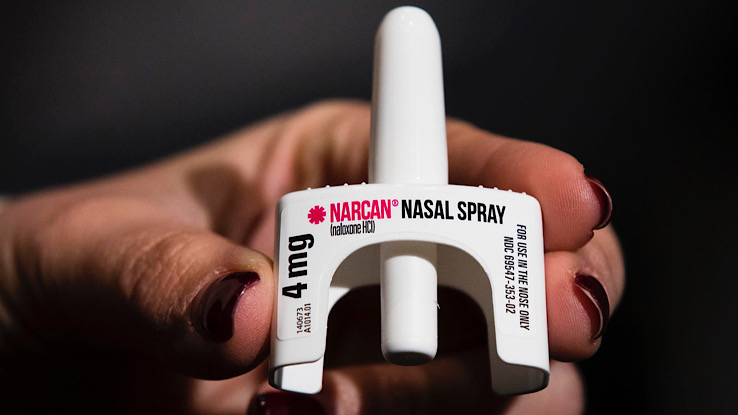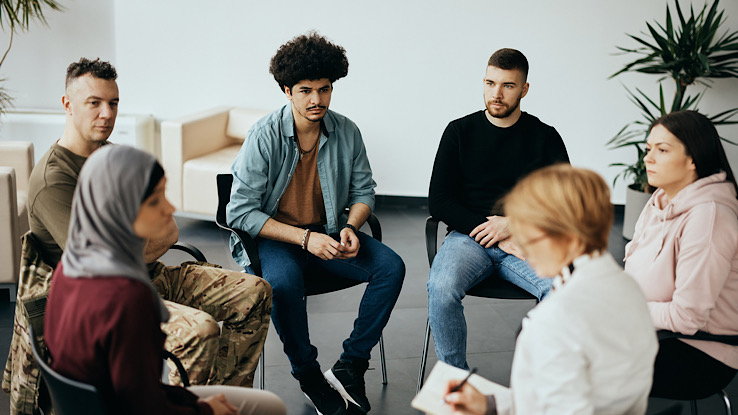
Editor’s Note: If you or someone you know is living with an opioid addiction or another substance use disorder, know that help is available. For assistance and support in facing substance misuse, contact the Substance Abuse and Mental Health Services Administration’s confidential, free National Helpline at 800-662-4357.
Narcan, also known as Naloxone, is an FDA-approved medication to rapidly reverse the effects of an opioid overdose. Although first responders almost always carry Narcan, it is now widely available at pharmacies in all 50 states without a prescription.
When in the right hands at the right time, Narcan can save the life of anyone who has overdosed on heroin, fentanyl, or prescription opioid medications. We’ll go over the basics of Narcan, including when and how to use it and where you can get it. If you or someone you love uses opioids, having a dose of Narcan on hand can be a literal lifesaver.
What Is Narcan And How Does It Work?
Naloxone is an opioid antagonist. This means it blocks opioids from attaching to the opioid receptors of nerve cells, essentially making the opioids unable to affect the body the way they normally would.
Narcan is a form of Naloxone that is administered as a nasal spray. Naloxone is also available as a prefilled injection (like ZIMHI) that you can inject into the outer thigh muscle. In hospital settings, Naloxone is often given intravenously to work as quickly as possible. In all of these formulations, Naloxone combats the effects of opioid toxicity from such drugs like heroin and oxycodone.
What Are Opioids?
Opiates are naturally occurring chemical compounds found in poppy plants. They produce pain relief effects and sometimes cause users to feel euphoria or even extreme feelings of happiness and emotional wellbeing. The term opioids is a catch-all term that refers to both the natural opiate compounds and similar-acting synthetic and semi-synthetic compounds. Whether people use opioids illicitly or as part of a prescribed treatment plan for a medical condition, these drugs are highly addictive. They can also produce very painful withdrawals after a long period of use.
Some common forms of opioids include:
- Codeine
- Heroin
- Hydrocodone (Vicodin)
- Fentanyl
- Morphine (Kadian, Avinza)
- Oxycodone (OxyContin, Percocet)
- Oxymorphone (Opana)
The longer someone takes any of these drugs, the higher their tolerance becomes. This means they start feeling like they need to take more and more of the drug to produce the original effects. Ultimately, this can lead to an opioid overdose, which is a very dangerous situation that can lead to death. During an overdose, the body receives more of a substance than it can handle, resulting in respiratory failure, coma, and death.
When And How Is Narcan Administered?
Family members or friends commonly administer Narcan if they suspect a loved one may have overdosed on opioids. An opioid overdose usually includes these symptoms:
- Unresponsiveness
- Loss of consciousness
- Limp body
- Inability to speak
- Slow breathing
- Shallow breathing
You may also notice these symptoms during an opioid overdose:
- Faint heartbeat
- Pale or blue skin
- Purple lips and/or fingernails
- Small, “pinpoint” pupils
- Vomiting
If you recognize any of these symptoms in someone who has recently ingested opioids, act fast because an opioid overdose can lead to respiratory failure, brain damage, and death. Even if you aren’t entirely sure but still suspect that someone may be experiencing an opioid overdose, the safest bet is to give them Narcan. It won’t have any effects on someone who hasn’t taken opioids.
You can administer Narcan by simply spraying a dispenser into the individual’s nostril. Each container holds only one dose of the medication and therefore cannot reuse it, so you’ll need to use a new container if you need more than one dose in the event of an emergency. Even if the person who’s overdosing regains consciousness, ensure you stay with them and keep them awake until emergency medical services arrive.
For thorough, step-by-step instructions on how to use Narcan, visit the manufacturer’s website. It’s important to be familiar with these steps before you ever need to use Narcan on someone.
When you administer Narcan during an overdose, it rapidly reverses and blocks the effects of the opioids in the individual’s body. Although this can quickly stabilize them, you should always call 911 after its administration. Even though Narcan rapidly reverses the effects of an overdose, it may also result in immediate and severe withdrawal symptoms.
Where Can You Get Narcan?
Due to the effectiveness of Narcan when it comes to saving lives, you can now get it without a prescription from pharmacies all over the country. For example, all Walgreens stores across the United States and Puerto Rico now offer it without a prescription, and many other major pharmacies also carry it.
If you’re interested in keeping a supply of Narcan on hand, talk to your local pharmacist. They will be able to supply you with Narcan, which they may refer to as Naloxone, and also answer any questions you may have about administering it. You may also be able to get a supply from your local health department, a local public health group, or a community-based distribution program.
Many pharmacies and health organizations offer supplies of Narcan for free. If you have any issues regarding a lack of prescription, you can download a prescription aid request form from the Narcan website.
Additionally, there are free training courses available at GetNaloxoneNow.org. In as little as 20 minutes, you can complete a free training course full of information you may need to potentially save the life of someone who has overdosed on opioids. Whether you know someone who uses opioids or simply want to be prepared in case of an emergency, the site has plenty of helpful resources.
Resources for Overcoming Opioid Addiction

Although opioid-based prescription medications can help manage pain and treat medical conditions, they can be dangerous when misused. According to the CDC, 7 of 10 drug overdose deaths are related to opioid use.
If you or someone you love is living with an opioid addiction, having Narcan on hand may help you in the short term in the event of an accidental overdose. You should know that you are not alone and that help is available. Below you’ll discover some resources to assist you, whether you want to get sober or are dealing with the addiction of a loved one.
Substance Abuse and Mental Health Services Administration (SAMHSA)
SAMHSA provides a free, confidential helpline that you can call 24/7 at 1-800-662-HELP (4357). Available in both English and Spanish, the hotline is always accessible for anyone looking for information about opioid addiction, whether for themselves or a loved one. SAMHSA can refer you to local support groups, treatment facilities, and other community organizations or send you free materials and information.
Narcotics Anonymous
Addiction is a lifelong illness that can be difficult to face alone. Narcotics Anonymous is a free support group open to anyone who identifies as having a substance misuse disorder. Members can increase their chances of staying clean and sober in the long run by attending regular meetings and finding support from others who understand what they’re going through. To find a meeting or get more information, visit NA.org.
Nar-Anon
If you have a loved one who lives with an addiction, there are also groups designed to support you, whether your loved one chooses to get treatment or not. Nar-Anon was originally designed for friends and family members of people with drug addictions. At meetings, you’ll find support from others who understand your situation and can help you learn techniques to navigate the impact of your loved one’s addiction.
Resource Links:
- “Opioid Basics,” via Centers for Disease Control and Prevention
- “Naloxone Drug Facts,” via National Institute on Drug Abuse
- “Understanding the Epidemic,” via Centers for Disease Control and Prevention
- “Naloxone: The Opioid Reversal Drug that Saves Lives,” via U.S. Department of Health and Human Services
- “Be the 1 Before 911,” via Narcan
- “Zimhi: Naloxone HCl Injection,” via Zimhi
- “About naloxone,” via Walgreens
- “Naloxone” via StatPearls
- “Opioid Analgesics”via StatPearls
- “Opioid Overdose” via StatPearls





